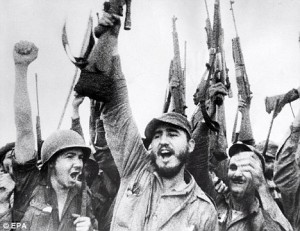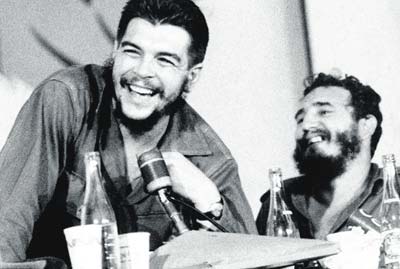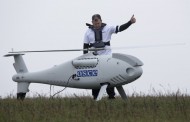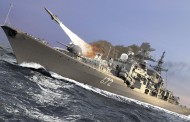In yet another flip-flop on a topical issue, Republican presidential nominee Donald Trump said that if elected, he would revoke the recently re-established diplomatic links between Cuba and the United States if the former’s leadership did not “meet his government’s demands.”
Speaking in Miami, Florida, the US city with the largest population of Cubans in the country and a vital swing state for the presidency, Trump noted the warmth in relations between Cuba and the United States during the administration of Barack Obama that culminated with the re-establishment of diplomatic links for the first time in over half a century.
“The next president of our country could change the policy on Cuba and revert back to the old system and this is exactly what I will do unless the Cuban government clearly meets all of our demands,” Trump said.
“With each of our policies, we will aim to give opportunities, prosperity and security to all the citizens of the United States,” Trump continued, “and we will try to do the same for the Cuban people in supporting them in their struggle against communist oppression because the pact made with Obama only benefits the Castro regime.”
As with many other issues, however, including several facets of immigration, the Islamic State, trade deals, minimum wage, taxes, the Iraq War, intervention in Libya, relations with Iran, climate change, abortion, political funding, health care and others, Trump has previously voiced different opinions on relations with Cuba as little as six months ago.
In March of this year during an interview with CNN, Trump said that he was “very open” to establishing a hotel property in Cuba. “I would definitely do that at the proper moment and when we would have permission to do that, but at the moment, legally we cannot,” he said and even said that would have gone for a wider diplomatic opening.
In September of 2015, before the Republican presidential primaries began and shortly after he announced his candidacy, Trump distanced himself from his Republican Party rivals and supported Obama’s policy on Cuba when he remarked that “50 years is enough” of the status quo.
Fast forward a year and Trump has outlasted the internal competition to become the Republican nominee. Trump is now locked into a tight battle with Democratic candidate Hillary Clinton for the presidency, and as the crucial November 8 election date nears, both candidates are looking to secure vital swing states like Florida.
Trump has chosen to focus on Florida and the Cuba issue for several reasons: Florida has the largest percentage of Cubans in the US and the largest percentage people 65 years of age or older (and that is the same group that votes in the greatest proportion).
These statistics are paired with the fact that support for the warming of relations with Cuba is lowest among Cuban-Americans (and Floridians in general) aged 65 or older and that Trump has found the most proportional support among elderly citizens throughout the country in general.
In March of this year, the most concrete sign of the warming relations between the two nation was on display as President Obama concluded a historic visit to the island nation, the first for a sitting US head of state in nearly a century.
As Obama stepped off the presidential plane ‘Air Force One’ at José Martí International Airport, he was greeted warmly by Cuban Foreign Minister Bruno Rodríguez, members of the Cuban Armed Forces who bestowed upon him full honors and a bevy of Cubans waving miniature flags of the United States and of their nation.
“This visit is of a historic nature as it has been just under 90 years since a US President has visited Cuba, but it is just the first step in new relations between our nations,” Obama said upon landing. “It is wonderful to be here and to be able to finally interact personally with the Cuban people.”
In a jam-packed visit, Obama visited the recently-opened Embassy of the United States in Havana and was then led around the streets of Old Havana and the city’s famous Malecón seawall by a local historian who served as his guide. He then met with Cardinal Jaime Ortega, who was Pope Francis’ primary contact in Havana during the negotiations to normalization Francis inspired, at the Cathedral of the Virgin Mary of the Immaculate Conception in Old Havana.
Obama also met with Cuban leader Raúl Castro and then a group of dissidents and young businesspeople, with whom he discussed politics and emerging (and future) opportunities on the island.
With Castro, Obama spoke of the decades of separation and hostility briefly but chose to focus on the present. Those differences, according to both leaders, still exist but are not insurmountable obstacles to firmly cementing the normalization of relations which began tentatively in October of 2014.
What was still left in place, however, was the US embargo on Cuba, which is opposed by every nation in the world besides the US and its staunch ally Israel. The embargo, instituted in 1960, targets commercial, economic, and financial aspects of US-Cuba relations, which included the US threatening to cut off ties with countries who dealt with Cuba at one point.
The Cuban government has blamed the embargo for many of the more troubled aspects of the national economy and development and wants to see it lifted. On the other side of the coin, detractors of the Cuban government in the US have also asked the embargo to be lifted so that, as they say, Havana could stop blaming the embargo for its government’s own economic shortcomings.
“The trade embargo will be lifted, I am sure of it,” Obama said in response to Castro. “What I am not sure of is when this will take place,” added Obama, who has previously voiced his support for the lifting of the embargo. In this instance, however, Obama’s personal feelings cannot play a role as the embargo can only be lifted by a congressional action, not by a presidential decree.
Economic reasons are the primary motives for why the US finally decided to restore relations with Cuba given that the European Union, China, Brazil, Russia and others recently became engaged with Cuba in negotiations concerning multi-billion dollar projects. If the US did not move quickly in normalizing relations (and does not move quickly in lifting the embargo), they would be left out of any possible future investment opportunities on the island.
Prior to the progress made recently, the US and Cuba, only 140 kilometers (90 miles) apart, had a very tense relationship set along the backdrop of the Cold War. Initially, US President Dwight Eisenhower cut formal diplomatic ties after Washington disagreed with former leader Fidel Castro’s economic and social policies that he instituted following the victorious uprising he led in 1959 against the US-backed dictatorship of Fulgencio Batista.
Eisenhower said after cutting diplomatic links that he “hoped” that the “historic friendship” between the two nations would be restored soon, most likely because he expected Cuban leader Fidel Castro to step down under heavy US pressure (or an invasion like the Bay of Pigs) or die from repeated US assassination attempts. Over half a century and 11 US Heads-of-State later, those diplomatic links were finally re-established.

- Будь в курсе последних новостей и интересных статей, подписывайся на наш канал «NovorossiaToday»
- Be aware of the current events and interesting articles, subscribe to our channel «NovorossiaToday»
- Pour ne rien manquer de la derniere actualite et des articles interessants, suis notre chaine Telegram en direct«NovorossiaToday»







